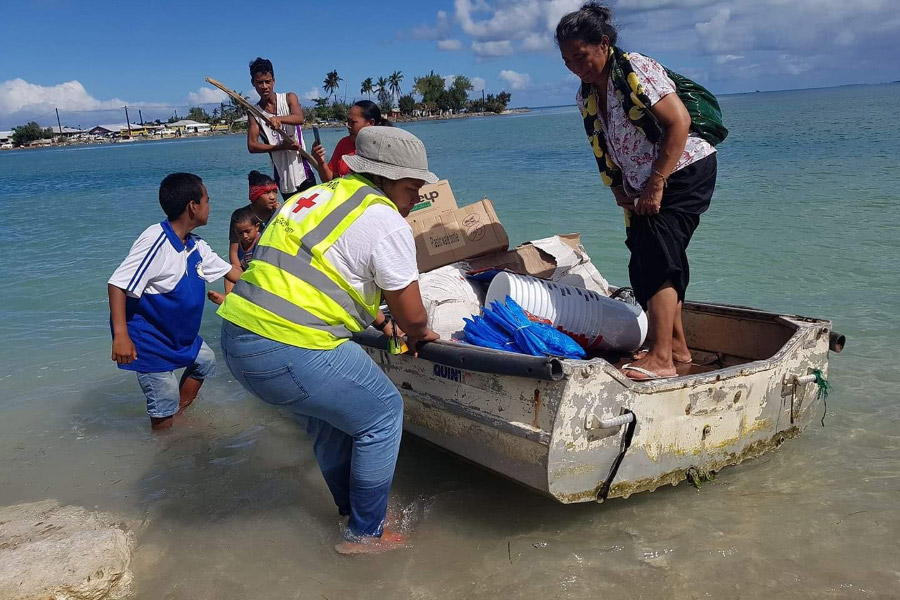The frequency and intensity of disasters continues to increase, as evidenced by the consistency of activations throughout this year, and the most destructive bushfire season on Australian record.
Our National Coordination Centre (NCC) for emergency response has been activated for all but seven weeks of the last 18 months.
As part of the comprehensive workforce wellbeing framework, we support our Red Cross people with independent wellbeing checks once they return from a disaster or emergency activation. This year 2,000 checks were undertaken. The Australian Psychological Society also volunteered 550 hours of psychologist expertise to support our workforce.
Helping people prepare
Because nobody is immune to emergencies, we help people to be prepared. This year 313,477 people took action to prepare for emergencies as a result of our campaigning and our Get Prepared app was downloaded 31,489 times.
Advocating for more mitigation by government
Red Cross influenced the Emergency Response Fund Bill by urging for funds for mitigation efforts, not just for response. Our submission contributed to the result of an extra $50M (total $200M) committed to improving disaster preparedness when the Bill was passed through Australian Parliament in October 2019.
Red Cross also significantly contributed to planning for implementation of a Disaster Risk Reduction Framework and provided briefings to Government ministers and departments.
Supporting locally-led action in Asia Pacific
This year we also implemented a new operating model for international programs, based on locally-led, humanitarian action. It shifts power and resources to national Red Cross and Red Crescent societies in Asia and the Pacific, to strengthen their resilience and ability to prepare for, respond to and recover from humanitarian crises.
Across Asia Pacific we have helped local Red Cross and Red Crescent societies to increase their capability to prepare for, respond to and recover from humanitarian crises.
- 7 National Societies across Asia Pacific have trained 3,729 people in epidemic control for volunteer or public health in emergencies.
- National Societies across Asia Pacific have reached over 4M people through outreach activities from social media and community news.
- The value of Australian Red Cross supported, locally led preparedness was evident in March with the response to the double impact of Tropical Cyclone Harold and COVID-19: 35k people impacted by tropical cyclone Harold were provided humanitarian assistance by the volunteer teams of Fiji and Vanuatu Red Cross societies. Solomon Islands Red Cross reached 2.5k impacted people with non-food items.

Tropical Cyclone Harold ripped through the Pacific in April 2020 causing widespread destruction in Solomon Islands, Vanuatu, Fiji and Tonga. Local RC societies were deployed to assist in response and recovery. Photo: Vanuatu Red Cross
In the face of COVID-19, Red Cross and Red Crescent societies' response has drawn on their institutional preparedness and strong capacity at the local and national levels. This strength is shown through investments in building volunteer skills, having operational branches throughout their countries, surety around core costs, systems and procedures to ensure inclusivity in services, and a strong auxiliary position to act quickly and independently.
In response to the restrictions on international travel, we’ve adjusted to digital delivery of advisory support (where context and connectivity allows). We’re providing remote training and toolkits such as ‘Epidemic Control for Volunteers’. We’re supporting national societies to work alongside their respective Ministries of Health to deliver COVID-19 risk communication and community engagement messages.
Additionally, we are utilising our international aid workers to provide surge technical support remotely in response to disaster and crises events. We see this as a major opportunity to review current models of international deployment/surge and learn how to better utilise approaches based on remote capacity strengthening and peer learning.